A recent survey published in the generally useful Taiwan-US Quarterly Analysis series at Brookings titled “When might US political support be unwelcome in Taiwan?” (Alastair Iain Johnston, Tsai Chia-hung, and George Yin, April 5) explores the visit of then-house speaker Nancy Pelosi to Taiwan last year. It purports to show that Taiwanese feel the visit worsened Taiwan’s security.
A glance at their September 2022 question “In August this year, US Congress Speaker Nancy Pelosi visited Taiwan, and China immediately held large-scale military exercises around Taiwan. Do you think this is a serious threat to Taiwan’s security?” shows that it consists of two parts. Readers are invited to grapple with the issue of which part of the question those polled (on landlines, apparently) were attempting to answer. What’s the threat, Pelosi or China?
The survey’s own ideological position was signaled in its contention that the US “one-China” policy is being “hollowed out,” an ideological claim it treats as a fact. It frames the debate over US Taiwan policy as a “…discourse about how to deter the PRC (People’s Republic of China) emphasizes military tools over the synergistic effects of assuring Beijing that the United States is not encouraging or enabling formal Taiwanese independence.”
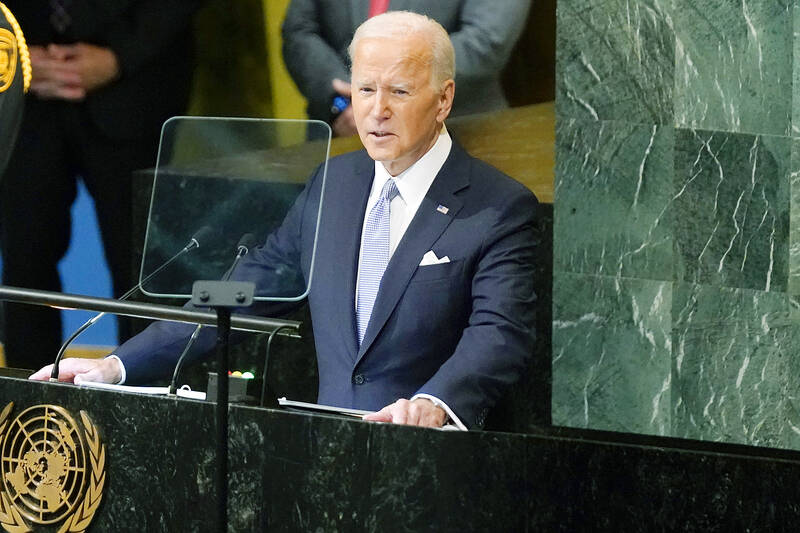
Photo: AP
SUPPORT FOR TAIWAN?
In their words, Washington is emphasizing military deterrence over what could be — in their view — the mutually reinforcing effects of also reassuring Beijing that it does not support Taiwan independence. The second part of that claim, that Beijing is reassured by US noises and that they mutually support US military deterrence, is an unevidenced assumption. Yet it makes its way into the survey as a question, inviting respondents to comment on it as if it were a fact and not an ideological position.
Writers who make this claim, a common assertion in the emerging pro-PRC “peace” discourse now flooding US media, invariably fail to support it with concrete references to history. This is because there is no evidence from history for it.
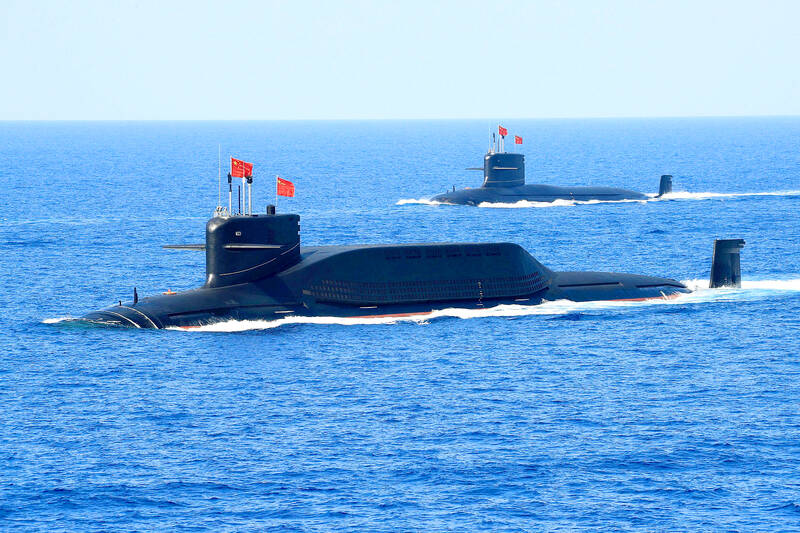
Photo: Reuters
Had the PRC felt “reassured” by the US “one-China” policy that Washington would eventually deliver the Taiwanese into concentration camps and permanent authoritarian surveillance, it would not now be building a world-beating navy and a military aimed at taking Taiwan. A much smaller military would have been sufficient to bully the other dozen or so states whose territories it claims.
Moreover, Washington demonstrated for three decades it was happy to look the other way as China expanded so long as US elites made money under the bankrupt “engagement” policy fiasco. The “hollowing out” took place not in the “one-China” policy, but in the moral response of US elites and the military they operate.
What history shows is quite simple: the US-side factor that has kept the peace between China and Taiwan is the enormity of US military might. As China has eroded that lead, it is hardly surprising that we talk of war. Indeed, it has been obvious that we are careening toward war in Asia for two decades, long before Biden was ever elected.
The equally obvious corollary is that unless the US rebuilds its military industrial base, deterrence will ultimately fail. Readers who doubt that are invited to consider the situation in the Philippines, where China occupies Philippine territories and there is very little their navy can do about it. The recent situations in Bhutan and Malaysia are similar.
Clearly, where a military is weak, the PRC will expand. Contrast that with nations that have large and effective militaries, like Japan and Vietnam, where Beijing is much less bold.
The Biden administration’s noises do not indicate any “hollowing out” of the US “one-China” policy, which has always been ambiguous about the issue. All of Biden’s comments on defending Taiwan are consistent with that position. Indeed, the assumption of all parties is that the US will defend Taiwan, which is one reason the PRC has built such a giant military.
Because the US position is that Taiwan is an unincorporated territory whose status awaits final disposition, almost anything the US could do is compatible with that policy. It could base forces here (it has, in a small way). It could do port visits of US-flagged naval vessels (it has). It could port naval ships here. It could back, ignore, or suppress Taiwan independence. Biden’s noises are totally compatible with this position.
The State Department’s regrettable word salad on Taiwan’s status in US policy not only hinders understanding, but fails to take note of Taiwan’s position under international law and what it is owed under the various UN agreements and declarations, reducing the flexibility and impact of US criticisms of Beijing. This is a disservice to Taiwan and to the US. Those who claim that Biden has “hollowed out” the US “one-China” policy should ask themselves why the State Department word salad has not been clarified.
In truth, the major policy change took place in Taiwan, not in the US. In commentary on Taiwan this change is conventionally presented as something that has occurred “since democracy” or “since the 1990s.” People are more supportive of Taiwan independence, we are told.
INDEPENDENCE
This presentation crucially functions as a double euphemism. First, it elides the long chain of evidence dating back to before World War II showing that the Taiwanese have always supported independence. Second, it makes the one-party state disappear by relegating it to the misty “before time” of the current era.
Recall that the authoritarian Chinese Nationalist Party (KMT) state suppressed Taiwan independence. Across that entire period, the Chinese could hope for an accommodation with the regime of Chiang Kai-shek (蔣介石) that would result in Taiwan being handed over to the PRC. What was “hollowed out” was that regime’s ability to control events, a control that Washington had benignly observed and could point to, saying a resolution was up to the “Chinese on both sides” or some such noise. KMT authoritarianism and US military might made Washington’s “one-China” policy an easy play.
That hope of the PRC ended as the 1980s closed and President Lee Teng-hui (李登輝) beat back a rightist revolt within the KMT and set the nation on a democratic path. And what a coincidence, that was when the PRC began making its first investment in a blue-water navy. Probably just another coincidence that the more the prospect of Taiwan simply being handed over recedes, the larger the PRC navy grows.
What has changed is that the one-party KMT state is no longer around suppressing Taiwan independence in mutually understood cooperation with Beijing. Its supporters can only wail and gnash their teeth and complain to each other privately that the one-party state’s only problem is that it didn’t kill enough pro-democracy people.
Oh, and project blame onto the US.
Notes from Central Taiwan is a column written by long-term resident Michael Turton, who provides incisive commentary informed by three decades of living in and writing about his adoptive country. The views expressed here are his own.

US President Donald Trump may have hoped for an impromptu talk with his old friend Kim Jong-un during a recent trip to Asia, but analysts say the increasingly emboldened North Korean despot had few good reasons to join the photo-op. Trump sent repeated overtures to Kim during his barnstorming tour of Asia, saying he was “100 percent” open to a meeting and even bucking decades of US policy by conceding that North Korea was “sort of a nuclear power.” But Pyongyang kept mum on the invitation, instead firing off missiles and sending its foreign minister to Russia and Belarus, with whom it
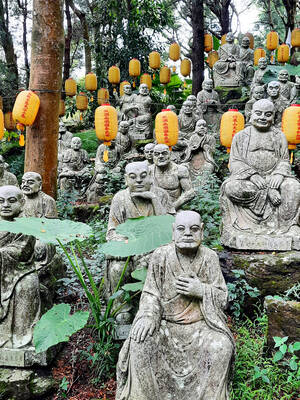
When Taiwan was battered by storms this summer, the only crumb of comfort I could take was knowing that some advice I’d drafted several weeks earlier had been correct. Regarding the Southern Cross-Island Highway (南橫公路), a spectacular high-elevation route connecting Taiwan’s southwest with the country’s southeast, I’d written: “The precarious existence of this road cannot be overstated; those hoping to drive or ride all the way across should have a backup plan.” As this article was going to press, the middle section of the highway, between Meishankou (梅山口) in Kaohsiung and Siangyang (向陽) in Taitung County, was still closed to outsiders
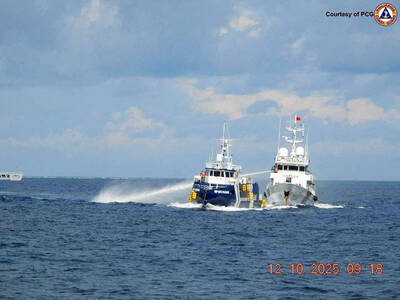
Many people noticed the flood of pro-China propaganda across a number of venues in recent weeks that looks like a coordinated assault on US Taiwan policy. It does look like an effort intended to influence the US before the meeting between US President Donald Trump and Chinese dictator Xi Jinping (習近平) over the weekend. Jennifer Kavanagh’s piece in the New York Times in September appears to be the opening strike of the current campaign. She followed up last week in the Lowy Interpreter, blaming the US for causing the PRC to escalate in the Philippines and Taiwan, saying that as
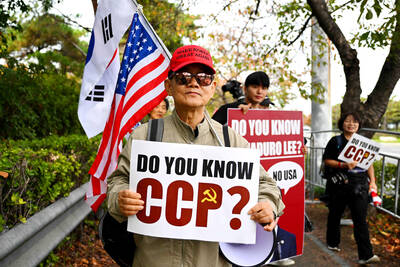
The Chinese Communist Party (CCP) has a dystopian, radical and dangerous conception of itself. Few are aware of this very fundamental difference between how they view power and how the rest of the world does. Even those of us who have lived in China sometimes fall back into the trap of viewing it through the lens of the power relationships common throughout the rest of the world, instead of understanding the CCP as it conceives of itself. Broadly speaking, the concepts of the people, race, culture, civilization, nation, government and religion are separate, though often overlapping and intertwined. A government